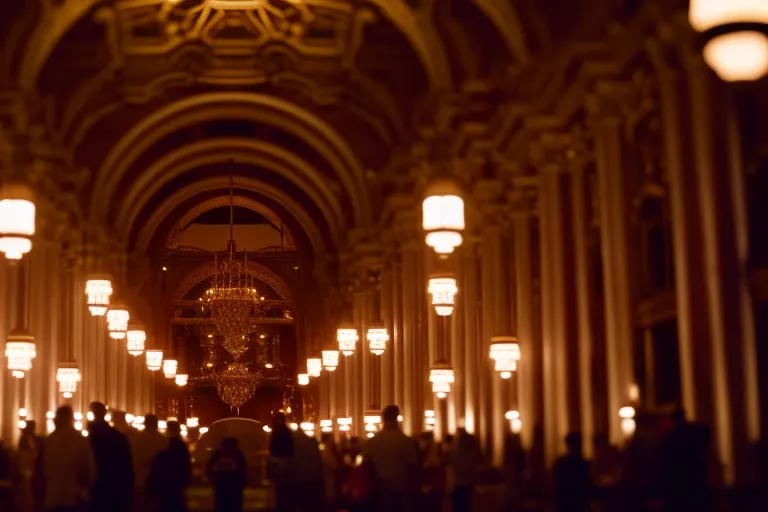If you're planning a trip to Tbilisi, the Georgian National Museum should be on your list of must-visit places. This museum is a treasure trove of Georgian history, culture, and art, and it's a great way to get a sense of the country's rich heritage. In this blog post, we'll take a closer look at the Georgian National Museum and some of its most interesting exhibitions.
The History of the Georgian National Museum
The Georgian National Museum was founded in 2004, but its history goes back much further than that. The museum's collections were originally housed in various institutions throughout Georgia, including the National Museum of Georgia, the Georgian State Museum of Theater, Music, Cinema and Choreography, and the Museum of Fine Arts. In 2004, these institutions were merged to create the Georgian National Museum, which is now the largest museum in the country.
The museum is located in the heart of Tbilisi, in a beautiful building that was once the home of a Georgian nobleman. The building has undergone extensive renovations to transform it into a modern museum, but it still retains many of its original features, including its ornate facade and sweeping staircase.
The Museum's Exhibitions
The Georgian National Museum has a wide range of exhibitions that cover everything from prehistoric artifacts to contemporary art. Here are some of the most interesting exhibitions you can see at the museum:
The Treasury
The Treasury is one of the museum's most popular exhibitions, and it's easy to see why. This exhibition features a stunning collection of gold and silver jewelry, including necklaces, bracelets, earrings, and tiaras. Many of the pieces date back to the 3rd millennium BC, and they offer a fascinating glimpse into the ancient cultures that once inhabited Georgia.
One of the highlights of the Treasury exhibition is the Colchian Gold exhibit, which features a collection of ancient gold jewelry that was discovered in the western region of Georgia. The Colchian Gold is considered to be one of the most important archaeological discoveries in Georgia, and it's a must-see for anyone interested in ancient history.
The Archaeological Treasury
The Archaeological Treasury is another must-see exhibition at the Georgian National Museum. This exhibition features artifacts from the Bronze Age, the Iron Age, and the medieval period, including weapons, pottery, and jewelry. One of the highlights of this exhibition is the collection of ancient coins, which includes coins from the Greek, Roman, and Byzantine empires.
The Archaeological Treasury also features a collection of ancient Georgian manuscripts, which are considered to be some of the most important cultural artifacts in the country. These manuscripts date back to the 5th century, and they offer a fascinating glimpse into the early history of Georgia.
The Ethnographic Treasury
The Ethnographic Treasury is a fascinating exhibition that explores the traditional cultures of Georgia. This exhibition features costumes, textiles, and household items from various regions of the country, and it offers a glimpse into the daily lives of Georgians throughout history. One of the most interesting items in this exhibition is a traditional Georgian wedding dress, which is adorned with intricate embroidery and beading.
The Ethnographic Treasury also features a collection of traditional Georgian musical instruments, including the panduri, a three-stringed instrument that is considered to be the national instrument of Georgia. Visitors can listen to recordings of traditional Georgian music and learn about the country's rich musical heritage.
The Soviet Occupation Exhibition
The Soviet Occupation Exhibition is a sobering reminder of Georgia's recent history. This exhibition details the Soviet occupation of Georgia from 1921 to 1991, and it includes photographs, documents, and personal accounts from Georgians who lived through this period. It's a powerful exhibition that offers a glimpse into the struggles and hardships that Georgians faced under Soviet rule.
One of the most interesting items in the Soviet Occupation Exhibition is a replica of the KGB prison that was located in Tbilisi during the Soviet era. Visitors can walk through the prison and learn about the brutal tactics that were used by the KGB to suppress dissent in Georgia.
The Museum of Soviet Occupation
The Museum of Soviet Occupation is another exhibition that explores Georgia's history under Soviet rule. This exhibition features artifacts from the Soviet era, including propaganda posters, photographs, and everyday objects. One of the most interesting items in this exhibition is a replica of the infamous "Iron Curtain," which separated Eastern and Western Europe during the Cold War.
The Museum of Soviet Occupation also features a collection of personal stories from Georgians who lived through the Soviet era. These stories offer a glimpse into the daily lives of Georgians under Soviet rule, and they provide a powerful reminder of the resilience and strength of the Georgian people.
Tips for Visiting the Georgian National Museum
If you're planning a visit to the Georgian National Museum, here are some tips to help you make the most of your experience:
- Plan to spend at least a few hours at the museum. There's a lot to see, and you don't want to rush through the exhibitions.
- Consider hiring a guide. A guide can provide valuable insights and context that will enhance your understanding of the museum's collections.
- Wear comfortable shoes. The museum is quite large, and you'll be doing a lot of walking.
- Bring a camera. There are plenty of photo opportunities at the museum, and you'll want to capture some of the stunning artifacts and exhibits.
Conclusion
The Georgian National Museum is a must-visit destination for anyone interested in Georgian history, culture, and art. With its wide range of exhibitions, there's something for everyone at this fascinating museum. Whether you're interested in ancient artifacts, traditional costumes, or contemporary art, the Georgian National Museum has something to offer. So if you're planning a trip to Tbilisi, be sure to add the Georgian National Museum to your itinerary.
